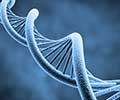What are the Causes for Hirayama Disease?
Hirayama disease is by and large regarded as an idiopathic condition, i.e. having no known cause. However, clinical observations have shown that excessive movement (flexion) of the neck (upper cervical region) causes the membrane (dura mater) covering the spinal cord to become lax. This displaces the spinal cord anteriorly, as a result of which it gets compressed and becomes damaged, leading to the manifestation of the various symptoms that characterize Hirayama disease.
There are also scanty reports that autoimmunity, infections, and toxins could also cause Hirayama disease, but more evidence is required. It has also been suggested that genetics could play a role, as it has been observed in rare instances that the disease runs in families.
What are the Symptoms and Signs of Hirayama Disease?
With the progress of the disease, patients increasingly experience a progressive decline in functional ability in the right hand, due to reduced muscle strength and dexterity. They have difficulty in performing everyday tasks, such as eating, grooming, dressing, writing, and grasping objects. As a result, patients cannot participate in sporting activities and there is a decrease in socialization too.
The major symptoms are listed below:
- Hand muscle weakness (weak grip)
- Hand muscle wasting
- Hand muscle cramps
- Cold hand
- Clawed hand
- Twitching of the hand (fasciculations)
- Trembling of the hand (tremor)
- Loss of fine motor control







